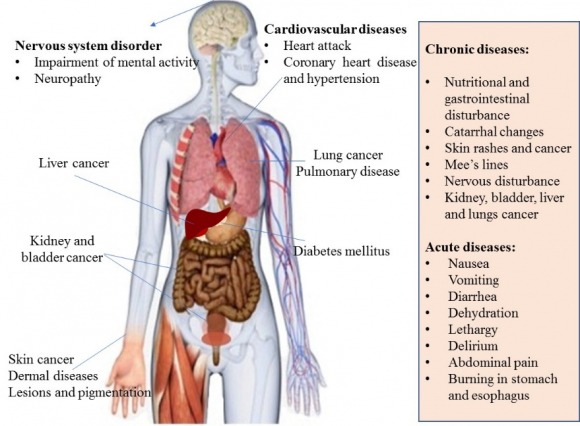Exploring the Hypothesis of Arsenic as a Potential Causal Factor in Polio
Introduction:
For decades, the medical community has sought to unravel the complex puzzle of poliomyelitis, commonly known as polio, a devastating disease that has afflicted millions worldwide. While the poliovirus has long been identified as the primary cause of polio, recent research has shed light on the potential role of environmental factors in the development and transmission of the disease. One such factor that has sparked considerable interest and debate is arsenic, a toxic metalloid found in soil, water, and various consumer products. In this blog, we’ll delve into the hypothesis of arsenic as a potential causal factor in polio, exploring the evidence, arguments, and implications surrounding this intriguing theory.
Understanding Polio:
Before delving into the hypothesis of arsenic’s role in polio, it’s essential to understand the basics of the disease itself. Polio is a highly contagious viral infection caused by the poliovirus, which primarily affects the nervous system and can lead to paralysis or even death in severe cases. The virus is transmitted through contaminated food, water, or contact with an infected person’s feces. While the development of vaccines has led to a significant reduction in polio cases worldwide, the disease remains a concern in some regions where vaccination coverage is inadequate.
The Role of Arsenic:
Arsenic is a naturally occurring element found in the earth’s crust, groundwater, and various minerals. It is widely recognized as a potent toxin that can cause a range of health problems, including cancer, cardiovascular disease, and neurological disorders. Exposure to arsenic typically occurs through consumption of contaminated water or food, inhalation of airborne particles, or contact with contaminated soil or industrial products.
In recent years, researchers have proposed the hypothesis that arsenic exposure may be a contributing factor in the development of polio. Proponents of this theory suggest that arsenic contamination in the environment, particularly in regions with high levels of arsenic in drinking water or soil, may weaken the immune system and increase susceptibility to viral infections like polio. Additionally, arsenic exposure may impair neurological function, making individuals more vulnerable to the neurological complications associated with polio.
Evidence and Research:
While the hypothesis of arsenic’s role in polio is intriguing, it is important to note that scientific evidence supporting this theory is limited and inconclusive. While some studies have observed associations between arsenic exposure and increased risk of infectious diseases, including viral infections, the specific link between arsenic and polio remains largely speculative. Furthermore, other factors, such as socioeconomic status, access to healthcare, and vaccination coverage, may confound the relationship between arsenic exposure and polio incidence.
Despite these limitations, researchers continue to investigate the potential role of arsenic in the epidemiology of polio, conducting studies to assess arsenic levels in polio-affected regions and exploring possible mechanisms of arsenic-induced immune dysfunction. However, conclusive evidence linking arsenic exposure to polio remains elusive, and further research is needed to fully understand the complex interactions between environmental factors and infectious diseases.
Implications and Future Directions:
The hypothesis of arsenic as a potential causal factor in polio raises important questions about the broader impact of environmental contaminants on human health and disease. If substantiated, this theory could have significant implications for public health policies and interventions aimed at preventing and controlling polio and other infectious diseases. Furthermore, it underscores the importance of addressing environmental pollution and ensuring access to clean water and sanitation facilities in at-risk communities.
In conclusion, while the hypothesis of arsenic’s role in polio offers a thought-provoking perspective on the disease’s epidemiology, it remains a subject of ongoing debate and investigation within the scientific community. As researchers continue to explore the complex interplay between environmental factors, infectious diseases, and human health, the quest to unravel the mysteries of polio and its causes remains as vital and urgent as ever.
See also
https://wp.toxi.com/2024/03/from-many-thousands-down-to-three-known-polio-iron-lungs/
https://wp.toxi.com/2024/03/paul-alexander-man-in-the-iron-lung-dies-at-the-age-of-78/
https://wp.toxi.com/2024/03/polio-actually-from-ddt/
https://wp.toxi.com/2024/03/polio-actually-from-exposure-to-electricity-rf-radiation/
